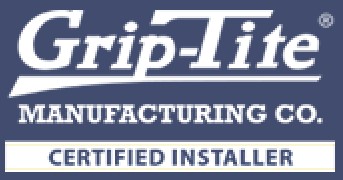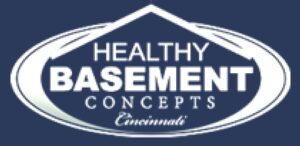FAQ
Basement Waterproofing FAQs
Basement Waterproofing
Basements leak every time the soil around the foundation is oversaturated with groundwater, during heavy storms, snow melt and at any time if the footing (French) drain is clogged or faulty.
The French or footing drain is a line of clay or corrugated pipe installed by the footing, around the entire external perimeter of the basement. Its job is to collect groundwater and divert it away and divert it away from the foundation.
If your home is less than 100 years old, chances are it already has a French drain. That is how long it´s been used to control groundwater. Yet, if your basement is still leaking, is probably because it is clogged or collapsed. You will either need to dig out your foundation and replace the pipe or have an Interior Drainage System installed along the interior perimeter of your basement, instead.
An interior basement drainage system replaces the old-fashioned French drain with a few advantages. If there is a problem with it, you do not need to excavate your yard. It can be fixed from the interior of the basement. Interior drainage systems come in all shapes and sizes. Some contractors use generic corrugate pipes and some, like Healthy Basement Concepts, use exclusive, patented drainage systems, that are specifically designed to deal with groundwater in the basements. Among the many advantages of these proprietary systems, is the fact that they can be flushed to prevent clogs and serviced throughout the years without the need to jackhammer your basement.
The sump pump is the heart of a waterproofing system. While the drainage system collects all the ground water that tends to pool around your foundation, it is the sump pump that will get it out and away from your basement. If the sump pump is out of commission, your basement may leak.
Sump pumps usually run out of your home’s electric power. The same storms, however, that are known to flood basements also tend to knock the power off. Without a battery backup, your sump pump will be down, just when you need it most.
That infamous musty odor indicates the presence of mold in your basement, even of you can’t see mold spots yet. Mold is a smelly fungus that loves damp and dark environments like a basement. Even in small concentrations it still releases spores and odors in the air.
If you have a visible mold infestation in your basement, start by getting rid of all the moldy items. Cardboard, paper, fabrics, upholstery, wood, drywall, and insulation must be removed and properly discarded. You can then clean mold from the walls and other hard surfaces using these CDC guidelines.
The be most effective way to permanently kill mold and keep it from growing back is to always keep relative humidity levels in the basement below 60%. That can be accomplished by running a good basement dehumidifier that will constantly monitor RH levels and run as needed if the levels are too high.
Stains in basement walls can have different causes. Some stains are mold. Others, like rusty-colored stains can indicate the presence of iron ochre in the groundwater, and a white, powdery substance covering the walls can be efflorescence. Basement wall stains usually are a sign of water seepage, and that your basement would benefit from drainage improvements.
Efflorescence is a white, powdery substance that sometimes cover the basement walls. Often confused with mold, efflorescence is not a living thing and it is virtually harmless. It is formed by the minerals brought in with the seeping water, and remain deposited on the walls when the water evaporates into the basement.
Having a leaky or damp basement finished without first addressing the moisture causes and sources is a real recipe for disaster. All your finishing materials and furnishings will get damp or wet and favor mold growth. And if the basement floods, the damages can be extensive and very costly to repair.
The typical homeowner’s insurance does not cover basement flood damage. Even if you have flood insurance, these policies have limitations of coverage. The best way to protect your property and avoid costly repairs in the future is to have your basement properly waterproofed
At Healthy Basement Concepts we fix vertical basement wall cracks, whether they are weeping or just unsightly, using a dual process, designed to stabilize the wall and stop leaks.
Pressure from an oversaturated soil pushing against the basement wall is usually the cause of bowing basement walls. Alleviating that pressure with proper basement drainage is the best way to stop a wall from bowing. In more serious cases, a bowing wall can be stabilized or strengthened by a foundation repair contractor using wall braces, carbon fiber, or wall anchors.
Get A Quick Quote
Let Healthy Basement Concepts Help With Your Basement Waterproofing Needs in Cincinnati, OH
Our entire team is certified to meet the highest standards. We provide premier service to all of our customers. Call us today from your home in the greater Cincinnati, OH area at 513-504-5985 for a free inspection and we’ll get started immediately!
Customer Reviews
 steven wolfenbergerMay 2, 2023Jason called the same day that I requested info. They were able to come over a few days later for an inspection and estimate. Jason explained what was causing the issues with our basement and then showed us the best options to fix the problem. There was no pressure to hire them and he didn't try to upsell us anything we didn't need. Jason and his team were able to come the following week and fix our basement. It took them a little less than 2 days to complete the job. Jason kept us updated during the whole process. We couldn't be happier with the results and would highly recommend Jason and Healthy Basement Concepts.
steven wolfenbergerMay 2, 2023Jason called the same day that I requested info. They were able to come over a few days later for an inspection and estimate. Jason explained what was causing the issues with our basement and then showed us the best options to fix the problem. There was no pressure to hire them and he didn't try to upsell us anything we didn't need. Jason and his team were able to come the following week and fix our basement. It took them a little less than 2 days to complete the job. Jason kept us updated during the whole process. We couldn't be happier with the results and would highly recommend Jason and Healthy Basement Concepts. Joseph GrotheMarch 28, 2023healthy basements just water sealed my basement. They did a great job and where very fast. They finished the job in two days. Healthy Basements Concepts is great value. highly recommend.
Joseph GrotheMarch 28, 2023healthy basements just water sealed my basement. They did a great job and where very fast. They finished the job in two days. Healthy Basements Concepts is great value. highly recommend. Paul D HindsMarch 20, 2023Stop. Read this review. After having six companies come bid a project with me, and being told by each company that I needed to do something else to fix the issue, there were only two companies that came out to quote me that didn't hesitate to roll up their sleeves and start trying to identify the root cause. Some of the quotes were upwards of $50k (I'm looking at you, EverDry), and others just quoted me for what I said I "thought" I needed. The moral of the story is, what I thought I needed, Jason found out was only part of the case and showed me why through a series of pictures he took. (Oh, and if you're curious, he was less than 1/3 of the huge quote. I told him it was still too expensive, and he told me exactly what I needed done immediately, and what could wait.) I mean, cmon, HBC sent me a thank you card THE NEXT DAY after completing the work. They thanked ME for the opportunity to solve my problem. There are companies that might quote less, but for my money, Jason Fry is a man of his word, and I trust his word completely.
Paul D HindsMarch 20, 2023Stop. Read this review. After having six companies come bid a project with me, and being told by each company that I needed to do something else to fix the issue, there were only two companies that came out to quote me that didn't hesitate to roll up their sleeves and start trying to identify the root cause. Some of the quotes were upwards of $50k (I'm looking at you, EverDry), and others just quoted me for what I said I "thought" I needed. The moral of the story is, what I thought I needed, Jason found out was only part of the case and showed me why through a series of pictures he took. (Oh, and if you're curious, he was less than 1/3 of the huge quote. I told him it was still too expensive, and he told me exactly what I needed done immediately, and what could wait.) I mean, cmon, HBC sent me a thank you card THE NEXT DAY after completing the work. They thanked ME for the opportunity to solve my problem. There are companies that might quote less, but for my money, Jason Fry is a man of his word, and I trust his word completely. Larry DawesFebruary 21, 2023Had water coming in basement in one area and they came out and looked at the area where the water was coming in and showed me where it was and told me it was something they did not fix but told me where to buy the water stopper and I could do it myself. I was impressed by his honestly and professional advice. If anyone is looking for water leak companies I would highly recommend giving them a call.
Larry DawesFebruary 21, 2023Had water coming in basement in one area and they came out and looked at the area where the water was coming in and showed me where it was and told me it was something they did not fix but told me where to buy the water stopper and I could do it myself. I was impressed by his honestly and professional advice. If anyone is looking for water leak companies I would highly recommend giving them a call. Fred CookJanuary 31, 2023I don't typically write reviews, but these guys really deserve it. Responsive, prompt, knowledgeable, detailed... they did a great job for a fair price and we couldn't be more pleased. The addition of a supplemental beam has improved the feel of the floor and has insured no issues with the new kitchen island.
Fred CookJanuary 31, 2023I don't typically write reviews, but these guys really deserve it. Responsive, prompt, knowledgeable, detailed... they did a great job for a fair price and we couldn't be more pleased. The addition of a supplemental beam has improved the feel of the floor and has insured no issues with the new kitchen island. Kristina LigonsNovember 20, 2022We woke up Labor Day Monday to wet carpet in our basement after a very rainy weekend. Even on the holiday, Jason answered the phone and helped us figure out next steps. He came and looked at the situation the following Friday and gave us quotes and a test to perform to figure out exactly where the water was coming from. We ended up having a crack in the basement wall. In that time we also had a death in the family so we had to put everything on the back burner. Jason was very understanding and helped us pick right back up when we were ready to move forward over a month later. His crew came to our house in Fairfield and were incredibly professional. They kept the area they were working in very clean and put down tarps to keep the rest of our house clean too. I would highly recommend Healthy Basement Concepts!
Kristina LigonsNovember 20, 2022We woke up Labor Day Monday to wet carpet in our basement after a very rainy weekend. Even on the holiday, Jason answered the phone and helped us figure out next steps. He came and looked at the situation the following Friday and gave us quotes and a test to perform to figure out exactly where the water was coming from. We ended up having a crack in the basement wall. In that time we also had a death in the family so we had to put everything on the back burner. Jason was very understanding and helped us pick right back up when we were ready to move forward over a month later. His crew came to our house in Fairfield and were incredibly professional. They kept the area they were working in very clean and put down tarps to keep the rest of our house clean too. I would highly recommend Healthy Basement Concepts! Adam BrandnerNovember 15, 2022I decided to encapsulate two crawlspaces at my home because the rooms above them were very cold in the winter. Additional annoyances were that both crawlspaces were dark, dirty areas that weren't usable for storage, and I worried about them harboring pests. It was more expensive they I'd imagined, but you really get what you pay for! Both spaces are now clean and bright, which has reduced clutter in my basement because we can store all of our seasonal items in the crawlspaces. The temperature issue was addressed effectively as well; both rooms above the crawlspaces are now pleasant in the winter. What I wasn't prepared for was how much of a difference it made in the summer. My sunroom went from being pretty hot every afternoon to feeling just a few degrees warmer than the main house. I didn't realize how much impact that sealing the exterior vents in the crawlspace below it would have during the summer months. Jason's team was hardworking, professional, and a joy to work with. I'd highly recommend them for this type of project.
Adam BrandnerNovember 15, 2022I decided to encapsulate two crawlspaces at my home because the rooms above them were very cold in the winter. Additional annoyances were that both crawlspaces were dark, dirty areas that weren't usable for storage, and I worried about them harboring pests. It was more expensive they I'd imagined, but you really get what you pay for! Both spaces are now clean and bright, which has reduced clutter in my basement because we can store all of our seasonal items in the crawlspaces. The temperature issue was addressed effectively as well; both rooms above the crawlspaces are now pleasant in the winter. What I wasn't prepared for was how much of a difference it made in the summer. My sunroom went from being pretty hot every afternoon to feeling just a few degrees warmer than the main house. I didn't realize how much impact that sealing the exterior vents in the crawlspace below it would have during the summer months. Jason's team was hardworking, professional, and a joy to work with. I'd highly recommend them for this type of project. leigh clarkOctober 16, 2022Jason made clear about what needed to be done to clean and repair my crawl space properly. Did the job in a timely manner and the area was cleaner and healthier when the job was finished. Great workmanship reasonably priced. I am very happy with their work. Highly recommend Healthy Basement Concepts!
leigh clarkOctober 16, 2022Jason made clear about what needed to be done to clean and repair my crawl space properly. Did the job in a timely manner and the area was cleaner and healthier when the job was finished. Great workmanship reasonably priced. I am very happy with their work. Highly recommend Healthy Basement Concepts!




